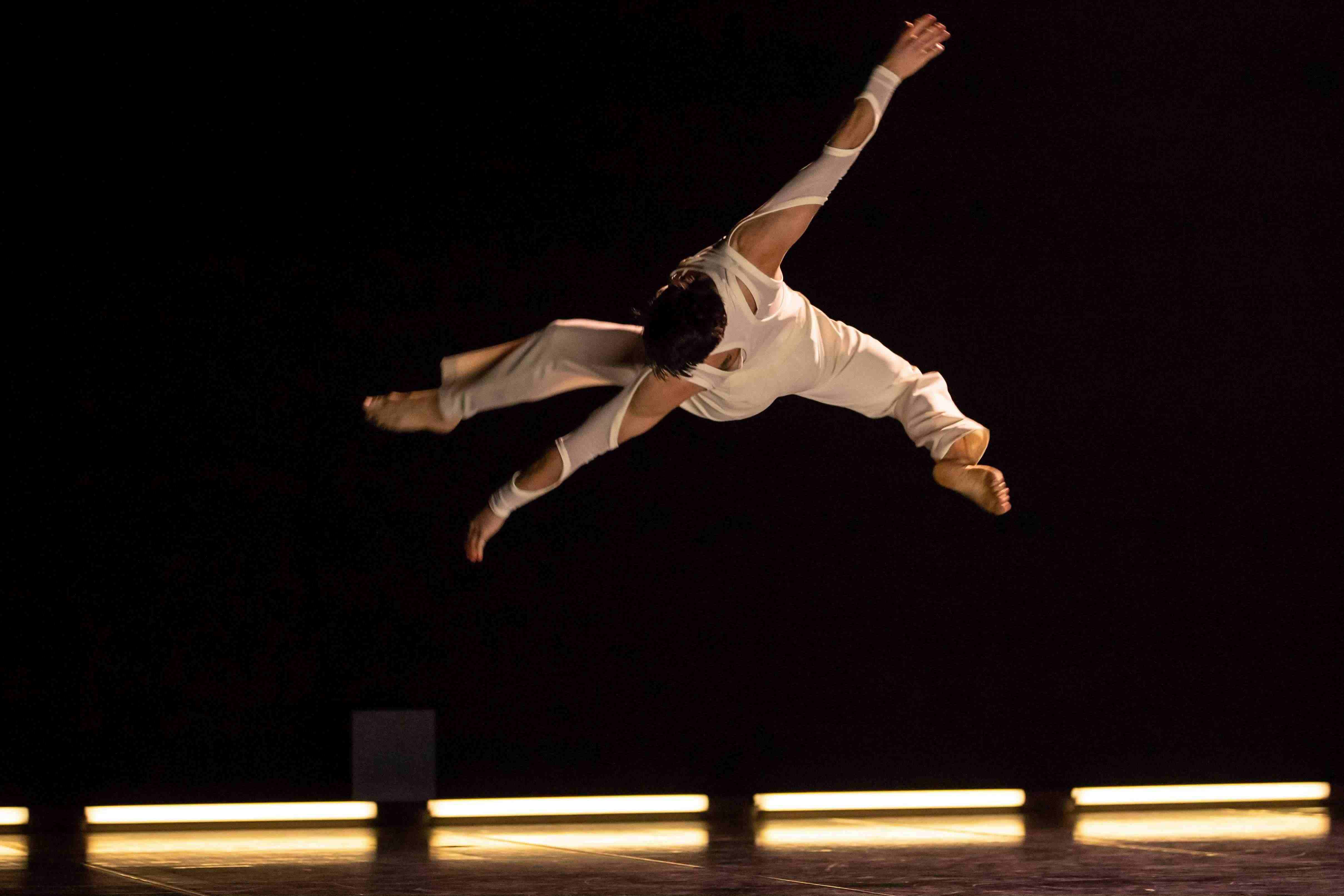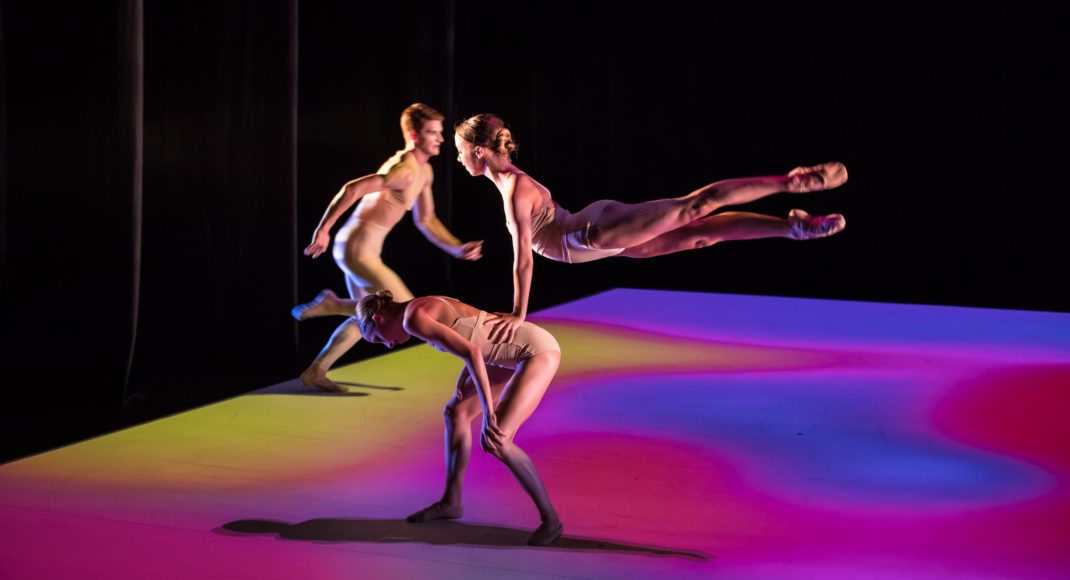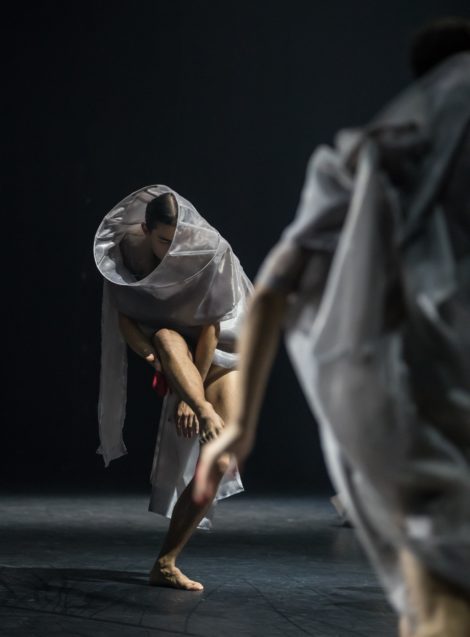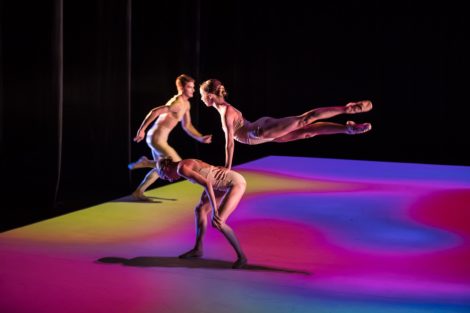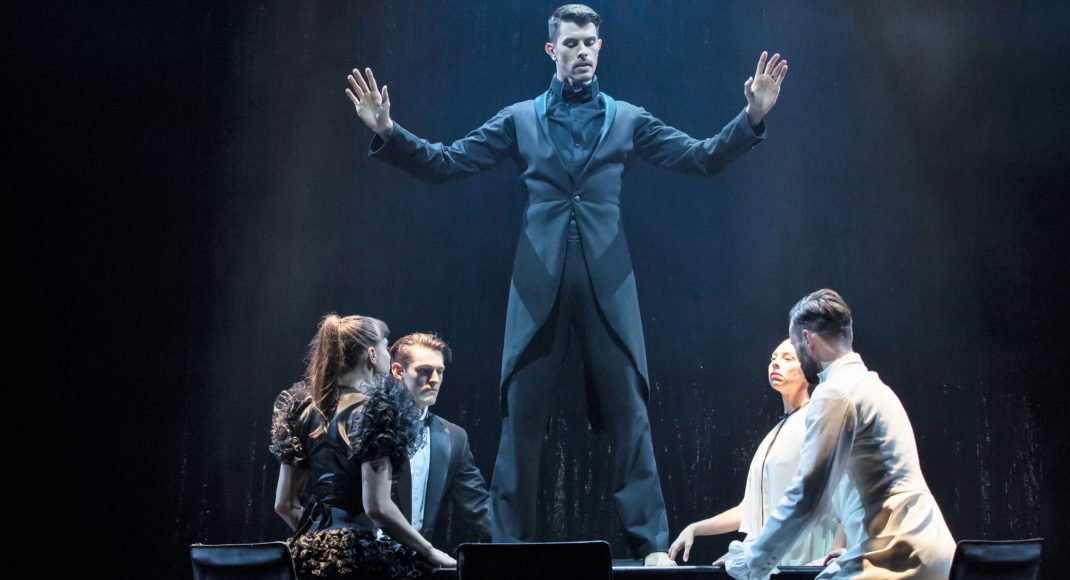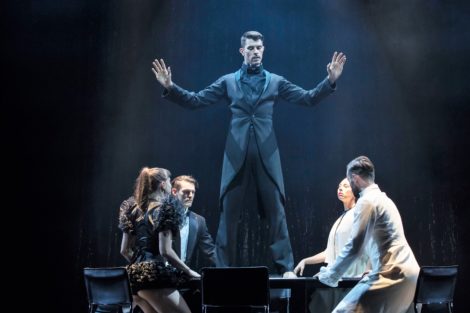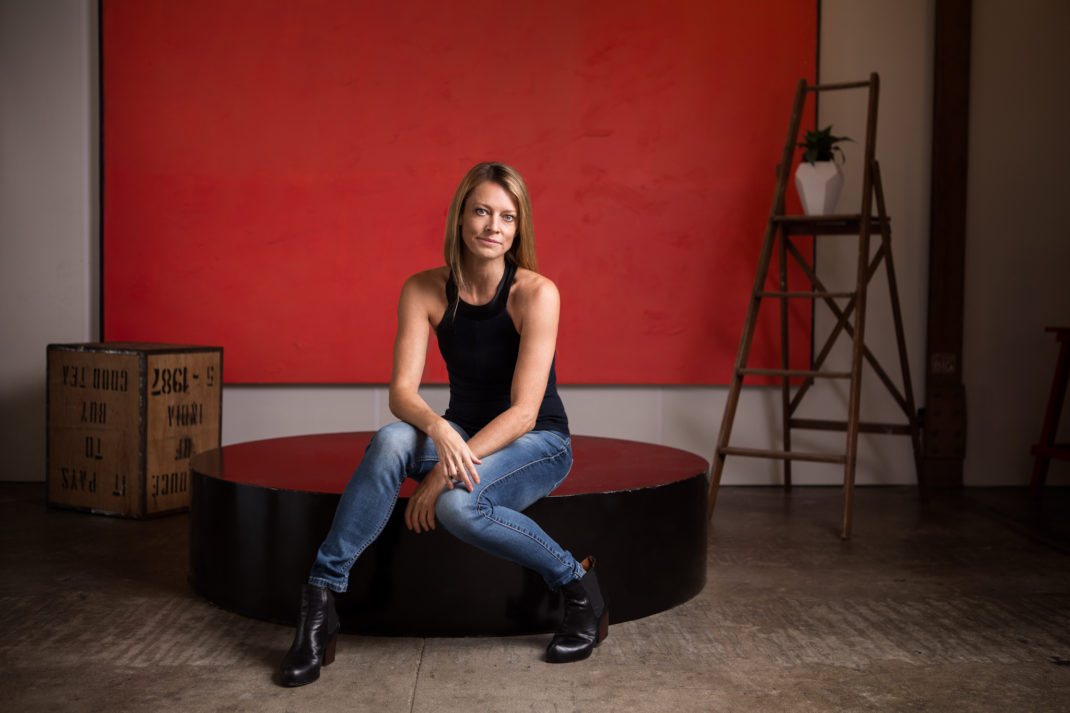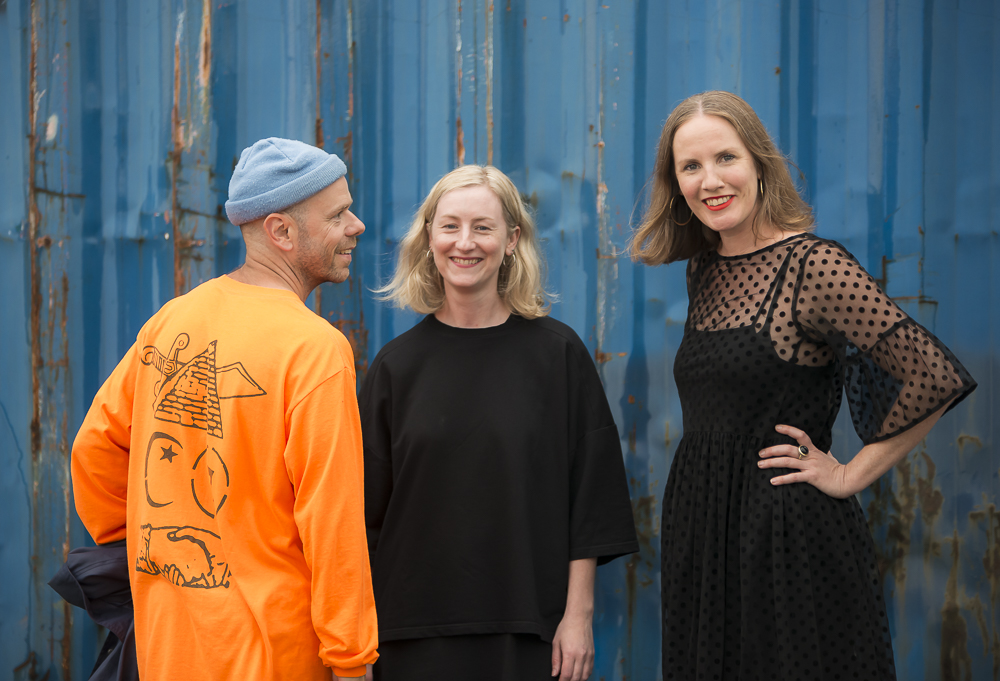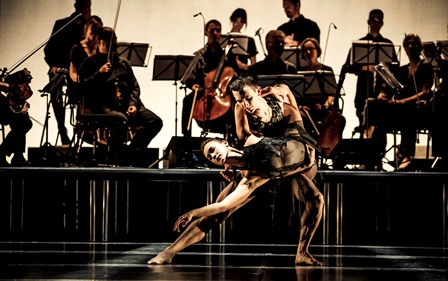15 July 2023 (matinee performance). Playhouse, Canberra Theatre Centre
The Canberra season of Lucie in the Sky from the Brisbane-based Australasian Dance Collective (ADC) was performed as part of Uncharted Territory, a new Canberra festival. The festival set out to investigate connections between technology and the arts, and the limitless possibilities of such connections. As an exploration of dance and drones, or dance with drones, and featuring six dancers and five drones, Lucie in the Sky, was perfectly suited to explore this connective idea.
Perhaps the first thing to say is that I was taken by surprise by the size of the drones. They were tiny. We in Canberra have had a certain amount of publicity (not always positive) about drones, the larger kind delivering coffee to people’s yards! The drones that entertained us in Lucie in the Sky were like insects that lit up the space and moved around it, and did so in a variety of often mysterious ways. They had names and personalities and were programmed to engage with the dancers (or vice versa) in different ways. They were ‘indoor drones’.
I especially enjoyed Lilly King whose dancing with a little drone lit blue seemed filled with emotion and care for the connection.
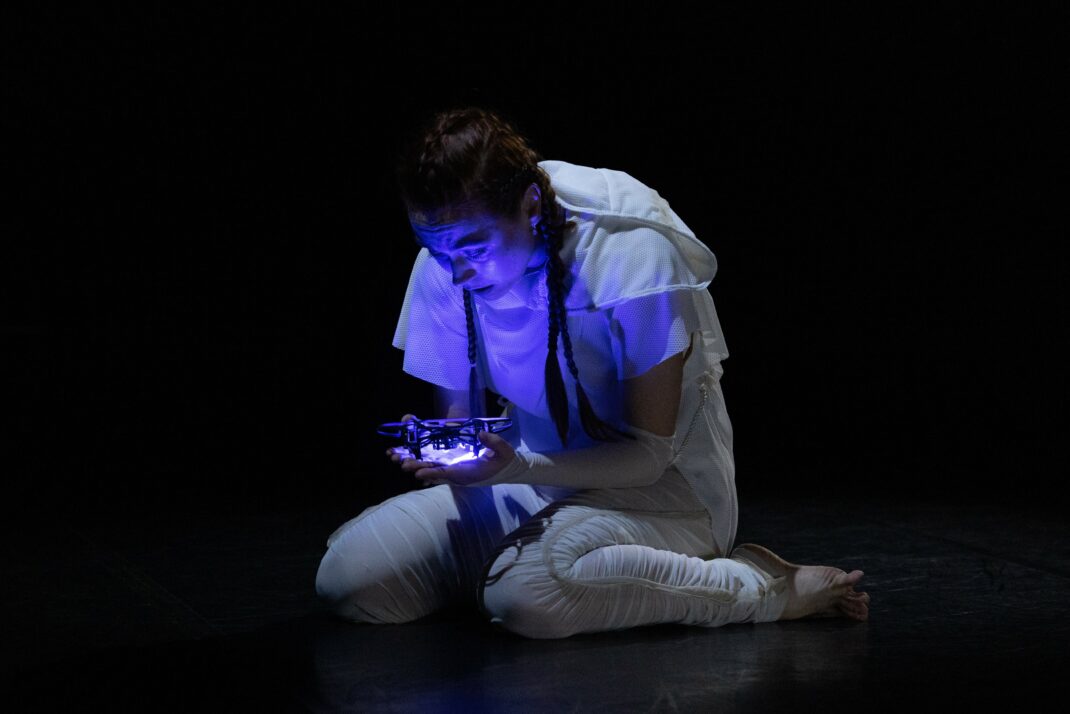
Other sections were more boisterous but equally engaging.
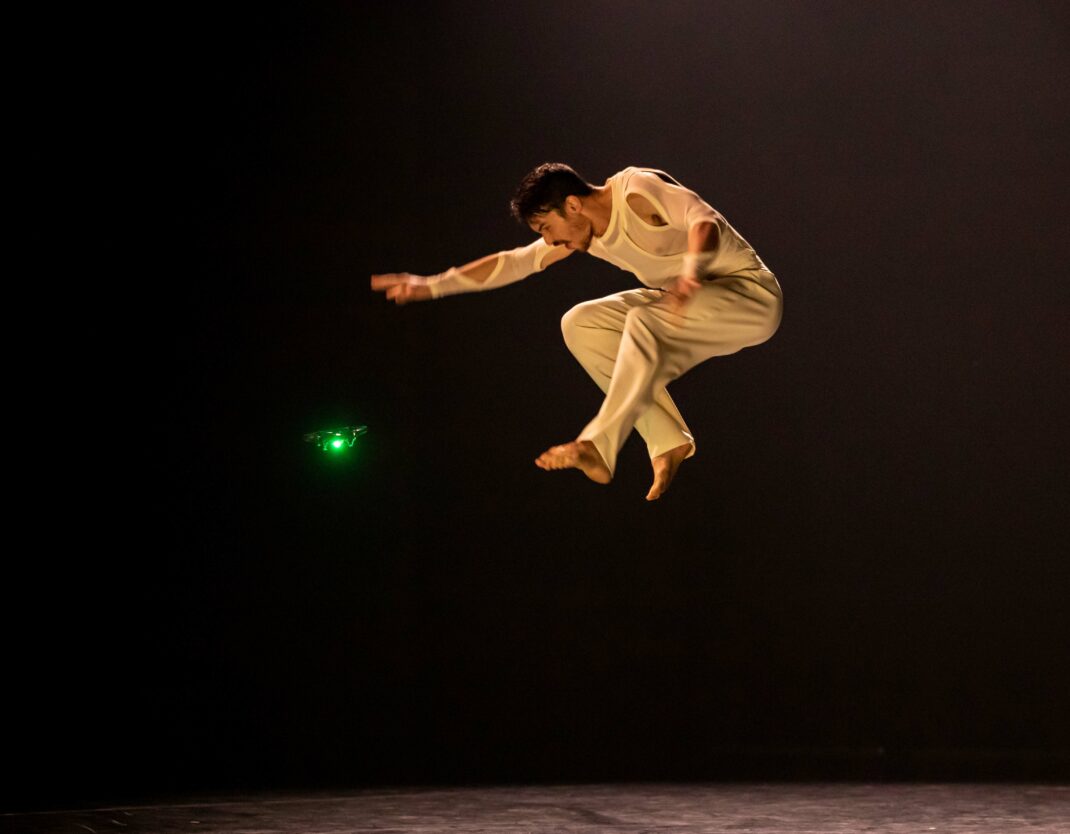
Before the curtain went up Amy Hollingsworth, artistic director of ADC, gave a short introductory talk about the various personalities of the drones and program notes listed the drones by name—one of whom, Lucie, gave her name to the show. But to tell the truth I was never sure which of the five drones was Lucie. I was unable to be accommodated on opening night (for reasons that I found extremely frustrating) so missed what was apparently a post performance discussion with some ADC personnel, which may have made things clearer. Who knows?
From a dance point of view (human dance that is), the standout performer was Harrison Elliott whose technique, including some hugely athletic jumps, was breathtaking. A significant amount of the dancing occurred between individual dancers and individual drones but there were moments of group dancing. I would have liked more.
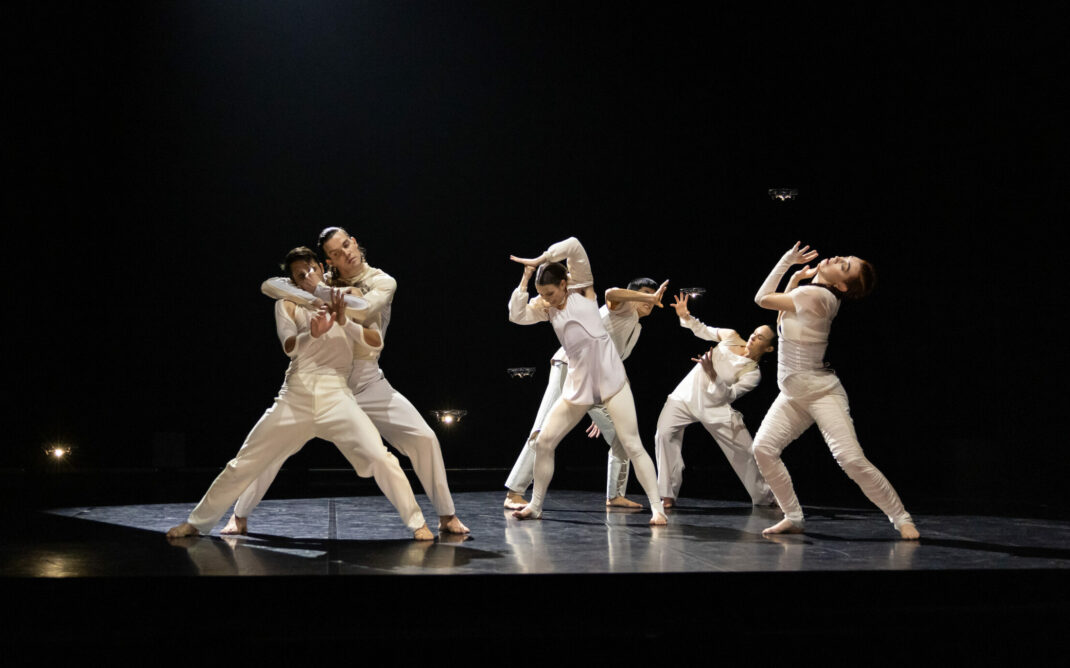
Lucie in the Sky was performed to a score by Wil Hughes who was also responsible for the sound design. At times the score was very loud and I wondered whether this was in order to cover up the noise of the drones? They seemed to be moving silently across the space. Costumes by Harriet Oxley had, on one level, an overall simplicity—trousers and a top, one colour for all dancers—but they were filled with individual detail that was often surprising and always quite beautiful. Lighting by Alexander Berlage was suitably atmospheric and changeable, although sometimes very dark. While Amy Hollingsworth and the dancers were responsible for the human choreography, the drone choreography was created by the Swiss company, Verity Studios.
Lucie in the Sky was a monumental undertaking and, given the potential for drones to take off on their own pathway (I imagine) despite programming, which didn’t happen (at least not obviously), the show was a highly successful exploration and a fascinating collaboration.
Michelle Potter, 18 July 2023
Featured Image: Harrison Elliott in Lucie in the Sky, Australasian Dance Collective, 2023. Photo: © David Kelly
